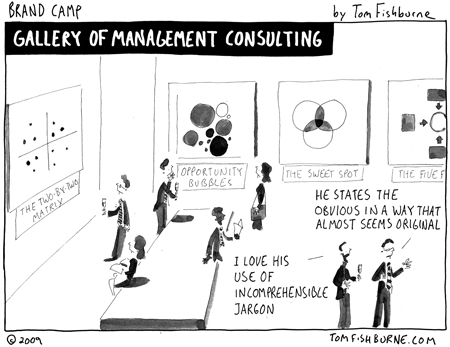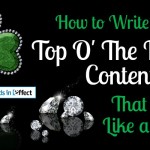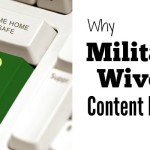
Do you believe content writing can be delegated to just about anyone? If so, here’s a disturbing vision that might just scare you straight.
A weak, wandering narrative. Sentences and paragraphs that don’t flow logically or stylistically. Incomprehensible bloat. Ideas randomly introduced. Awkward or missing transitions. Tangents that lead readers astray, out into the dark forest, then lose them altogether.
One by one, your audience disappears—picked off by that evil, murderous duo, Confusion and Irritation.
Haphazard Writing Is Murder.
Long-form content requires much more than a catchy headline and subject-matter expertise. It needs lots of forethought, finessing, and fine-tuning to engage readers and move them to act.
Whatever you do, do NOT write long-form content without having mastered the basics of English composition. If you attempt it anyway, you’ll be doing your brand a disservice.
Writing rules and best practices aren’t necessarily intuitive. Nor are they negotiable. They must be learned and practiced and practiced again. No matter how well-intentioned you might be, if you’re poorly equipped or halfhearted in your writing efforts, your content will reflect that. And your audiences will suffer for it.
Say Goodbye to Those Pesky Prospects for Good! Here’s How.
1. Whip up Something That Has No Discernible Purpose.
Maybe you’d like to help readers solve vexing problems, showcase your thought-leading ideas or practices, or spur discussion by weighing in on an industry debate.
All fine and good. But what’s the backstory? Why this topic, this channel, this moment in time? What unique contribution can you make? How does this fit into/support your broader marketing campaign/strategy?
Who cares, really? I mean, if you want your audience gone, forget purpose. Forget personas. Let your tone, structure, and style—your entire approach—be a matter of personal whim. Writing is easier that way.
2. Seize on a Topic That’s Been Beaten to Death.
No one needs to read another post about what content marketing is and why it bolsters business—unless you can make it so illuminating and entertaining that people will be dazzled, come away with something new, and eagerly share it.
In an earlier post (“Is Your B2B Blog a Real Snoozefest?“), I tackled this very subject using the following example of supposedly groundbreaking content:
Top 10 Tips for Writing a Blog Post
Create a top-10 list.
Include visuals.
Share on social media.
[ . . . ]
Pinch me! I must be dreaming, because I’m deep in REM sleep mode.
If your blog marches to this same predictable rhythm, you’re not giving readers much to look forward to or talk about in their social circles. You might as well stop posting and revisit your purpose, your objectives, and what’s really driving your efforts.
Go ahead: Follow that familiar format, hammer those cliches, and play it safe. Keep things easy for you and predictable for your readers. To ensure your audience’s quick demise, you’ll want your content to blend in nicely with the content everyone else in your industry is producing.
3. Use Lofty Language, Blase Boilerplate, and Industry Jargon.
Perhaps you’ve heard of this phenomenon called the “curse of knowledge.” It’s the inability of smart, knowledgeable people to translate their genius into broadly relatable content. To me, this challenge is completely understandable—and entirely surmountable. We B2B content writers make our living translating industry expertise for the benefit of target audiences.
When B2B marketers resist using plain language and rely instead on lofty words, industry cliches, and soul-drainingboilerplate, it’s not a curse of knowledge that plagues them. It’s the fear of being authentic and vulnerable. Breaking the industry mold is just too great a risk.
In her post “20 Devastating Content Marketing Mistakes,” Tatiana Liubarets writes, “It’s almost never acceptable to hide simple concepts behind confusing language or buzzwords. Keep it simple, stick to the basis of your ideas, and never let yourself slip into this content marketing mistake.”

If you want to keep audiences engaged, Liubarets’ advice makes sense. If you want them gone, keep pushing the meaningless blather and testing the limits of readers’ patience.
4. Deny Them Food and Compass. Then Lead Them Far Astray.
When they begin their journey with you, readers want and expect to be able to follow your train of thought. They need sustenance—solid support for your assertions and an emotional connection with you. They need to understand the lay of the land, and they need a clear sense of direction.
If you want to muddle your message without mercy, try these smooth moves:
- Provide as little context as possible. Force your audience to navigate in the dark.
- Don’t clarify relationships between and among ideas. (No clear framework, no logical progression, no transitions.) Also, jump back and forth for no apparent reason and without warning.
- Clog the works with irrelevant details, pointless tangents, and unnecessary words and phrases.
- Be as dry, dull, and formulaic as possible. The last thing you want is to seem passionate about your topic and give readers a reason to care.
5. Build a Giant Wall of Text and Force Your Audience to Climb It.
The look of your web page or document is as important to the reader’s experience as the writing itself. Readers want and expect scannable information, transitional cues, appropriate fonts, visuals that reinforce key messages, ample white space, and aesthetic appeal.
So don’t give them the pleasure! Ditch the subheads. Keep paragraphs big and monolithic. Use tacky or inappropriate fonts and visuals. Or skip the visuals altogether.
Then sit back, relax, and watch those pesky prospects drop like flies.

Since 2001, Becky Tumidolsky has written awareness-building content for B2B brands and their discerning audiences. Her work has appeared in leading publications such as Forbes, U.S.News & World Report, Bloomberg Markets, Newsweek, and Inc. as well as corporate blogs, websites, white papers, and other content assets.
Becky loves writing fluid, error-free prose. She’s even more passionate about building the foundation for her work—uncovering core brand distinctions, framing them thematically, and developing fresh, compelling narratives that advance corporate strategies.
Follow and connect: Twitter| Google+| LinkedIn| Facebook





Leave a Reply